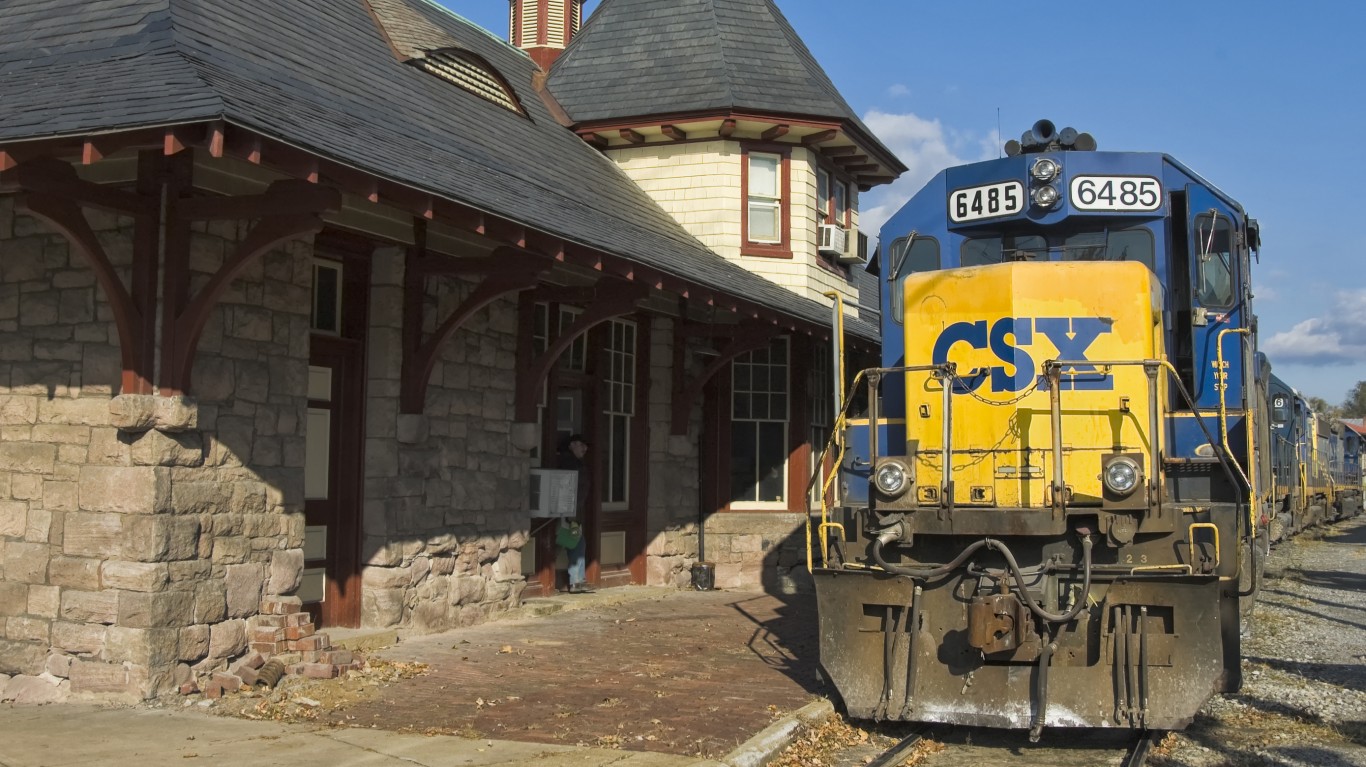
Life for railroader CSX Corp. (NYSE: CSX) had been looking pretty good since the beginning of 2020. The stock price was up more than 9% when markets closed on February 20. Just six trading days later, the shares had given back all the year-to-date gain and more.
By now we all know how badly the markets performed in the last week of February as uncertainty over the spread of the coronavirus reached new heights. Not only were reported cases of the disease rising, they were rising fast outside of China. South Korea, Iran and Italy have all recently reported more new illnesses than has China.
The market recovery in the first two trading sessions of March appears to reflect, at least in part, the trend toward fewer new cases in China and reports that workplaces have begun to reopen. Once China’s manufacturing capacity comes back, goods will begin flowing around the globe again. At least that’s what investors seem to be counting on.
Rail Shipping Is Declining Across the Board
Total rail traffic was down 5.0% in 2019 and intermodal traffic was down 5.1%. With the exception of chemicals and oil, shipping by rail has fallen off a cliff.
Coal shipments continue declining, down 16.5% for the year to date and down 26.8% for the same week a year ago. Since 2009, coal shipments by rail had dropped from nearly 7 million U.S. carloads annually to just over 4 million in 2018.
Crude oil hit a peak of around 500,000 cars in 2014 and had dropped by half in 2018. Crude oil was the only commodity to show an increase in carloads in 2019, up 12.2% year over year.
The Intermodal Business Is Faltering
As of February 22, total train carloads were down 6.5% compared to the same period last year. For the week ending February 22, carloads were down 9.3% compared to the same week in 2019.
Intermodal shipping, the by-now ubiquitous 20-foot and 40-foot containers, was down by 6.2% year over year and for the week was down 6.0%.
Cargo traffic through the Port of Los Angeles was down about 25% in February amid a rash of canceled ship sailings, Port Executive Director Gene Seroka said on February 24. Total container volume in the first quarter could tumble by 15% from a year ago. Seroka also noted that about 80 sailings of containerships to the United States from China were canceled between February 11 and April 1.
If containerships don’t arrive at U.S. ports, the number of containers needing rail services declines. The longer that goes on, the worse the railroad’s operating ratio gets.
How CSX Fits In
When CSX reported fourth-quarter earnings in mid-January, the company posted earnings per share of 2019 of $0.99, on revenue of $2.89 billion, a year-over-year drop of 8%. For the year, revenue was down 3% and earnings per share were up 9%.
Rising profits on falling revenues typically means cost reductions. CSX posted its lowest full-year operating ratio ever in 2019, 54.8%, significantly better than its 2018 ratio of 60.3%. A railroad’s operating ratio is nothing more than total expenses divided by revenue. As in golf, a lower score is better. After a shaky 2019, CSX had some good news.
In 2019, CSX had the poorest performance among the U.S. railroad stocks. Of the four U.S.-based, independent freight haulers, all but CSX performed better than the S&P 500 in 2019. Norfolk Southern Corp. (NYSE: NSC) stock added just over 30% last year, Union Pacific Corp. (NYSE: UNP) added 34.3% and Kansas City Southern (NYSE: KSU) gained a whopping 62%. CSX posted an annual gain of just under 17.7%, well short of the S&P 500’s gain of around 29% and the Dow Jones Transportation index’s 19% gain.
CSX has projected 2020 revenue to be flat to down 2% year over year. The operating ratio for the year will rise to 59%, and capital expenditures will range between $1.6 billion and $1.7 billion, essentially flat with 2019. CSX will continue to return capital to shareholders and is committed to maintaining a “strong investment grade rating.” That’s pretty weak tea, and the coronavirus outbreak has weakened it even further.
Container shipping from China to the U.S. west coast will remain low or fall even more for at least another six weeks. Will it pick up enough in the rest of the year to overcome what appears to be a disastrous first quarter? Investors have raised their bets in the past few days that the spread of the coronavirus has begun to slow in China and that business will return to normal fairly soon.
Even if that happens, CSX was not expecting much in 2020, and that outlook has not improved.
100 Million Americans Are Missing This Crucial Retirement Tool
The thought of burdening your family with a financial disaster is most Americans’ nightmare. However, recent studies show that over 100 million Americans still don’t have proper life insurance in the event they pass away.
Life insurance can bring peace of mind – ensuring your loved ones are safeguarded against unforeseen expenses and debts. With premiums often lower than expected and a variety of plans tailored to different life stages and health conditions, securing a policy is more accessible than ever.
A quick, no-obligation quote can provide valuable insight into what’s available and what might best suit your family’s needs. Life insurance is a simple step you can take today to help secure peace of mind for your loved ones tomorrow.
Click here to learn how to get a quote in just a few minutes.
Thank you for reading! Have some feedback for us?
Contact the 24/7 Wall St. editorial team.
 24/7 Wall St.
24/7 Wall St.

